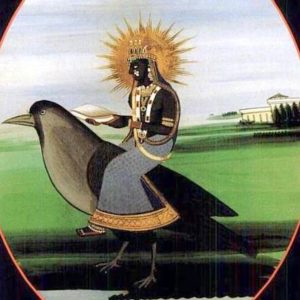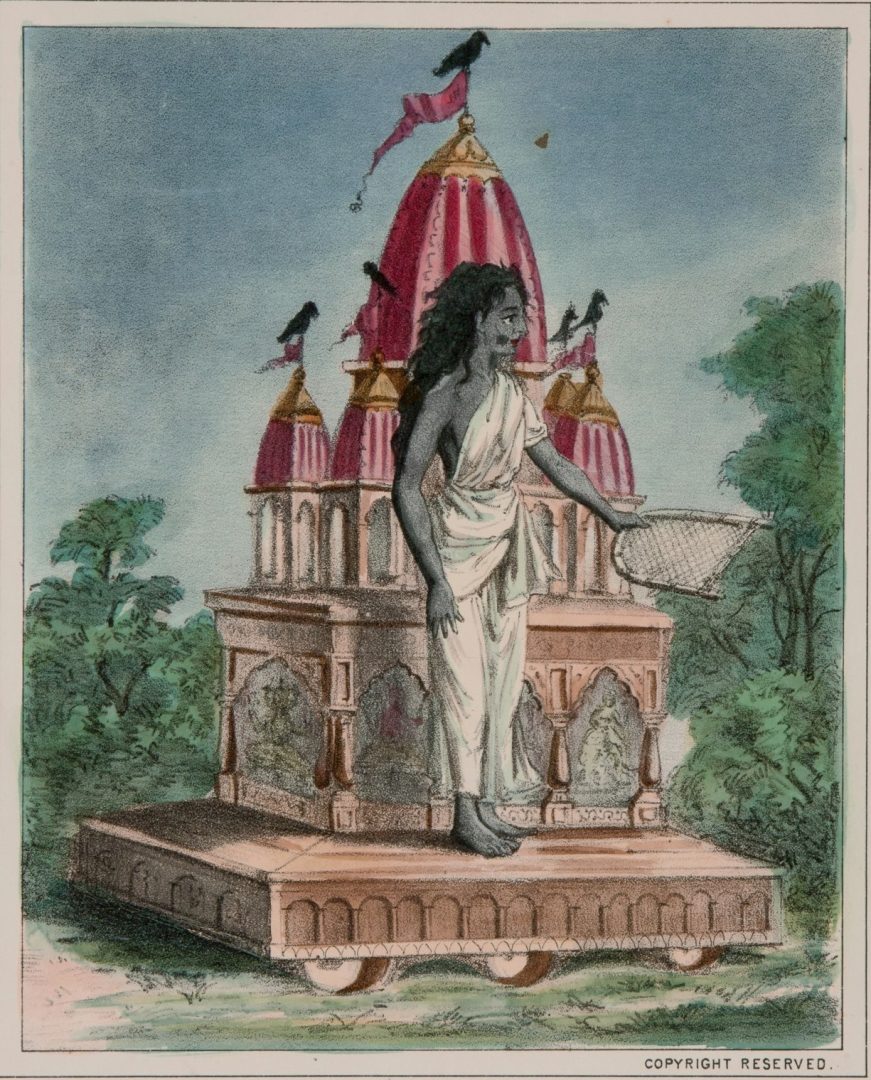In Hinduism, Dhumavati is one of mahavidyas otherwise known as the ten great wisdom goddesses. Mahavidyas represent manifestations of the divine mother. Dhumavati is the divine mother at the time of the deluge when the world was underwater. Devi is the Sanskrit word for goddess. Goddesses are an undiminished part of Hinduism, and the worship of goddesses is a significant aspect of the Hindu religion. The range of these ten goddesses covers the whole of feminine divinity, with a horrific goddess at one end, and a ravishingly beautiful at the other. The name Mahavidyas comes from the roots maha (great) and vidya (revelation, manifestation, knowledge, wisdom). Dhumavati acts as the sanctified deity in the form of old age and death. Only the impassioned devotee is able to see beyond the fear of mortality to the Goddess’s promise of immortality.
The legend behind Dhumavati’s origin
The legend behind Dhumavati’s origin says that once, when Shiva’s spouse Sati, was dwelling with him in the Himalayas, she became extravagantly hungry and asked him for food. When he refused to indulge her, she said, “Well, then I will just have to devour you.” Thereupon she swallowed Shiva. She persuaded to disgorge him, and when she did he cursed her, condemning her to assume the form of the widow Dhumavati. The myth underlines Dhumavati’s destructive affinity. Her hunger is only satisfied when she consumes Shiva, who himself contains or creates the world. Dhumavati is the embodiment of “unsatisfied desires.” The myth also emphasizes that Dhumavati as a widow is ill-omened. This is consolidated by the fact that she has also been cursed and rejected by her husband. Her status as a widow is inquiring. She makes herself one by swallowing Shiva, an act of self-assertion, and perhaps independence.
What the dhyana mantra of Dhumavati says
The dhyana mantra of Dhumavati says that she is ugly, unsteady, and angry. She is tall and wears filthy garments. Her ears are hideous and rough, she has elongated teeth, and her breasts hang down. She has a nose shaped like a crow’s beak. She is sometimes said to resemble a crow, which appears as her emblem atop her chariot. She has the disposition of a widow.
 Her eyes are fearsome, and her hands tremble. In one hand she holds a winnowing basket, and with the other hand, she makes the gesture of conferring boons. Her nature is discourteous. She constantly yearns for food and drink and is never satisfied. She likes to create conflict, and she is always terrifying in appearance.
Her eyes are fearsome, and her hands tremble. In one hand she holds a winnowing basket, and with the other hand, she makes the gesture of conferring boons. Her nature is discourteous. She constantly yearns for food and drink and is never satisfied. She likes to create conflict, and she is always terrifying in appearance.
The dress she wears has been taken from a corpse in the cremation ground. She is said to be the embodiment of the tamas gun, the aspect of creation associated with lust and ignorance. Her thousand-name hymn says that she likes liquor and meat, both of which are tamsic. Dhumavati is also interpreted by some Tantra scholars as “the aspect of reality that is old, ugly, and unappealing. She dwells in areas of the earth that are perceived to be desolate, such as deserts, in abandoned houses, in quarrels, in mourning children, in hunger and thirst, and particularly in widows. The goddess tends to be in a sad state of mind and is quarrelsome. Her eyes are glaring red, stern, and without tenderness. Her lips too are red, covered with blood.
Several “levels” at which these Devis can be worshiped with the prescribed Mantra and Yantra
Like simple worship of the yantra with the mantra recitation, as a remedial astrological measure, elaborate worship with all tantrak rituals for attaining various siddhis associated with these tantras and for spiritual salvation. A Yantra is a symbolic diagrammatic representation of a Deity, or parts of the human body, various aspects of life – both spiritual and material. It is an instrument, talisman, or mystical diagram usually in copper. It is a technique through which one can obtain one’s desires, and fulfill one’s wishes. It is said that the Deities reside in the yantras and by performing “puja” or worship one can please them. If you want to do proper Tantrik worship by ritualistically following all the anganyasa, karanyasa, mudra, avahana, pratisthana, offerings, rituals and worship the various places of the yantra with the prescribed beeja mantras, then a yantra is more useful. For proper Tantrik worship you have to do the pratisthana yourself and by following all the rules do a 100,000 times mantra japa within 44 days (one mandala). Normally people do 125,000 times mantra Japa in 48 days – the extra number to take care of any mistakes in pronunciation or counting. The Dhumavati Mantra as per Mantra Mahaodadhi: “Dhum Dhum Dhumavati Swaha” The tantrik worship of these most powerful Vidyas must be practiced only under the guidance of a siddha Guru.






